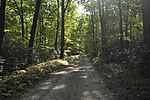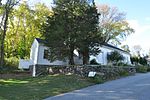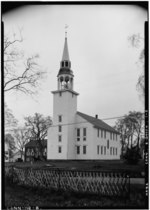Windham County, Connecticut
1726 establishments in Connecticut1960 disestablishments in ConnecticutConnecticut countiesCounties in Greater BostonPages with non-numeric formatnum arguments ... and 4 more
Populated places established in 1726Use mdy dates from May 2021Windham County, ConnecticutWorcester, MA–CT metropolitan area

Windham County is one of the eight historical counties in the U.S. state of Connecticut, located in its northeastern corner. As of the 2020 census, the population was 116,418, making it the least populous county in Connecticut. It forms the core of the region known as the Quiet Corner. Windham County is included in the Worcester, MA-CT Metropolitan Statistical Area, which is also included in the Boston-Worcester-Providence, MA-RI-NH-CT Combined Statistical Area. The entire county is within the Quinebaug and Shetucket Rivers Valley National Heritage Corridor, as designated by the National Park Service.
Excerpt from the Wikipedia article Windham County, Connecticut (License: CC BY-SA 3.0, Authors, Images).Windham County, Connecticut
Charing Cross, City of Westminster Covent Garden
Geographical coordinates (GPS) Address Nearby Places Show on map
Geographical coordinates (GPS)
| Latitude | Longitude |
|---|---|
| N 41.83 ° | E -71.99 ° |
Address
Charing Cross
Charing Cross
SW1A 2DX City of Westminster, Covent Garden
Inglaterra, Reino Unido
Open on Google Maps










